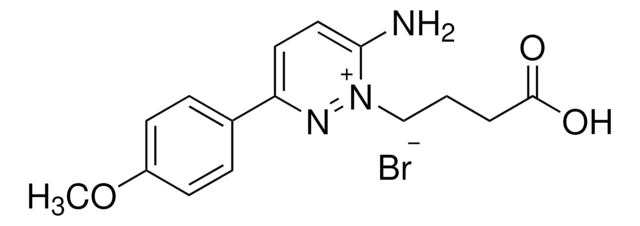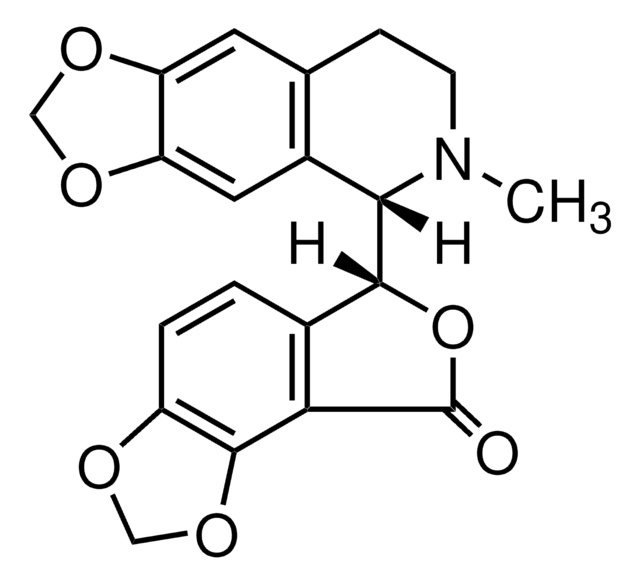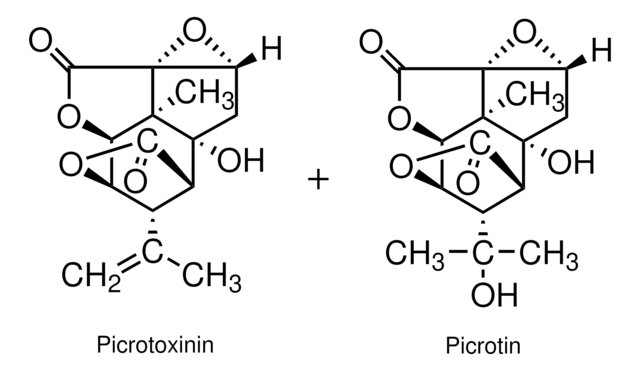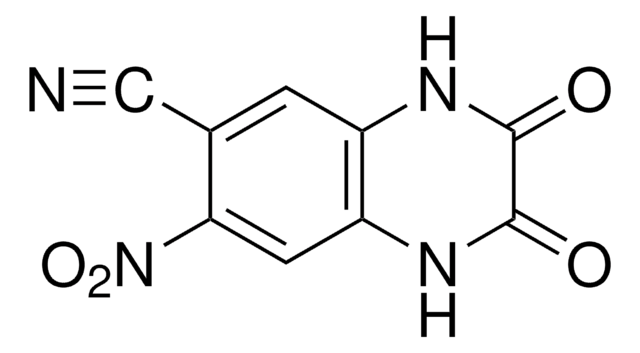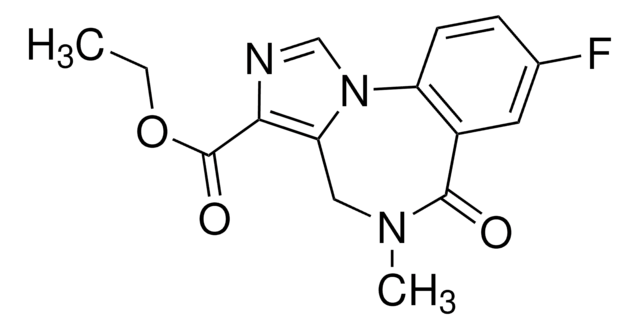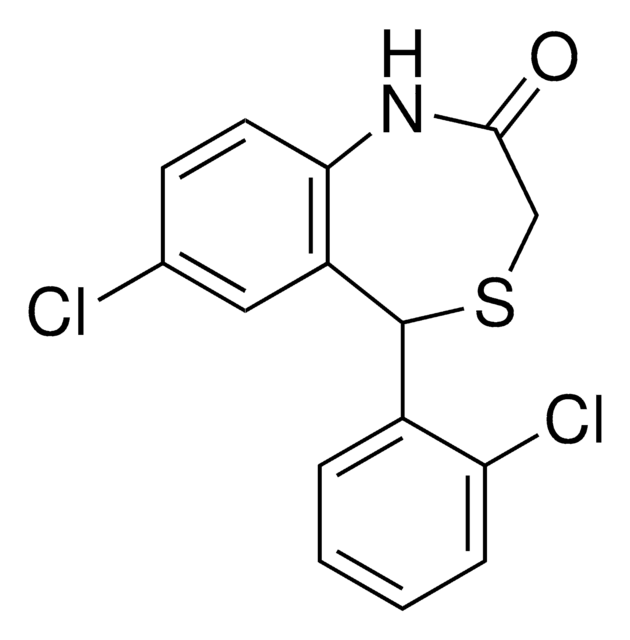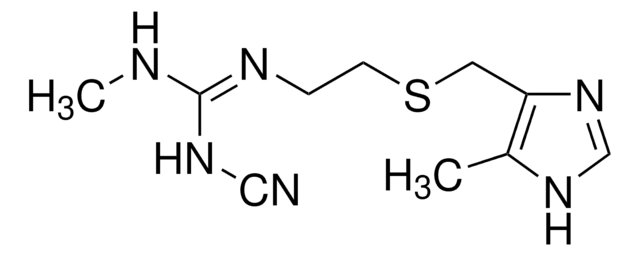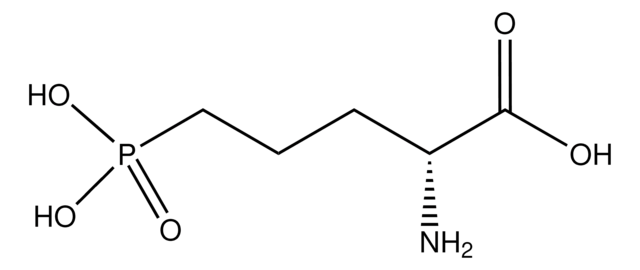SML0594
CGP 55845 hydrochloride
≥98% (HPLC)
Synonym(e):
(2S)-3-[[(1S)-1-(3,4-Dichlorophenyl)ethyl]amino-2-hydro xypropyl](phenylmethyl)phosphinic acid hydrochloride, CGP 55845A, CGP55845
About This Item
Empfohlene Produkte
Assay
≥98% (HPLC)
Form
powder
Lagerbedingungen
desiccated
Farbe
white to beige
Löslichkeit
DMSO: 5 mg/mL, clear (warmed)
Lagertemp.
room temp
InChI
1S/C18H22Cl2NO3P/c1-13(15-7-8-17(19)18(20)9-15)21-10-16(22)12-25(23,24)11-14-5-3-2-4-6-14/h2-9,13,16,21-22H,10-12H2,1H3,(H,23,24)/t13-,16-/m0/s1
InChIKey
ZODSPDOOCZZEIM-BBRMVZONSA-N
Biochem./physiol. Wirkung
Leistungsmerkmale und Vorteile
Lagerklassenschlüssel
11 - Combustible Solids
WGK
WGK 3
Flammpunkt (°F)
Not applicable
Flammpunkt (°C)
Not applicable
Analysenzertifikate (COA)
Suchen Sie nach Analysenzertifikate (COA), indem Sie die Lot-/Chargennummer des Produkts eingeben. Lot- und Chargennummern sind auf dem Produktetikett hinter den Wörtern ‘Lot’ oder ‘Batch’ (Lot oder Charge) zu finden.
Besitzen Sie dieses Produkt bereits?
In der Dokumentenbibliothek finden Sie die Dokumentation zu den Produkten, die Sie kürzlich erworben haben.
Kunden haben sich ebenfalls angesehen
Verwandter Inhalt
DISCOVER Bioactive Small Molecules for Neuroscience
Unser Team von Wissenschaftlern verfügt über Erfahrung in allen Forschungsbereichen einschließlich Life Science, Materialwissenschaften, chemischer Synthese, Chromatographie, Analytik und vielen mehr..
Setzen Sie sich mit dem technischen Dienst in Verbindung.
